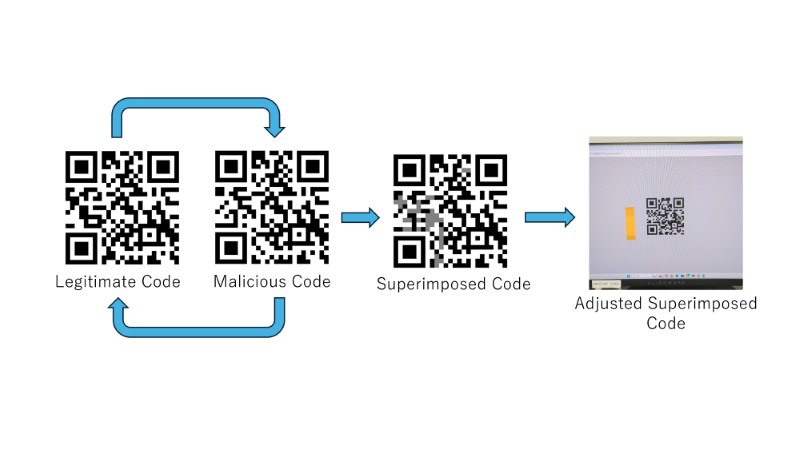QR codes are widely used due to their convenience for information access via smartphones, but visual detection of tampering remains challenging for users. This poses significant security risks, particularly when QR codes are modified to encode different information while appearing unchanged, as such alterations often go unnoticed.
In this research, we developed a novel attack method using disguised QR codes with high refresh rate monitors capable of displaying at 120Hz or higher. This technique rapidly alternates between two QR codes at 120Hz or higher, creating the illusion of a single code to the human eye while enabling cameras to probabilistically capture either of the two codes. Compared to conventional disguising methods, this approach is significantly harder to detect visually and provides greater flexibility for malicious modifications.

Our evaluation experiments demonstrated that malicious data with minimal modifications from legitimate codes could evade detection in approximately 80% of cases. Furthermore, we confirmed that the probability of capturing malicious data can be controlled by adjusting the alternating display patterns.

